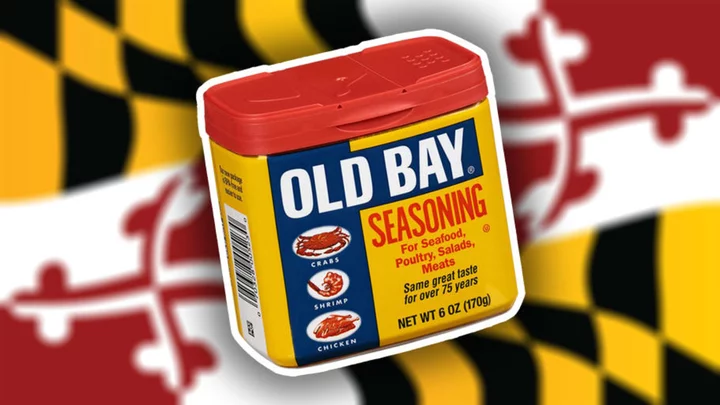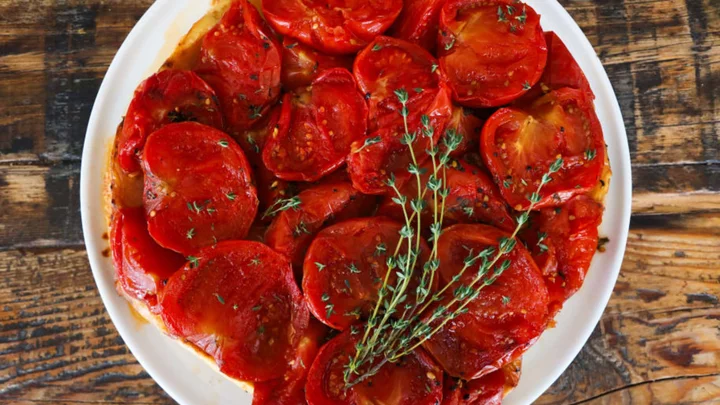Real Marylanders don’t just season their crabs with Old Bay. The orange spice blend is all over their popcorn, around the rim of every quality Bloody Mary, and occasionally mixed into their ice cream. Some devotees even carry a container in their purses.
In other words, Old Bay Seasoning is a major point of pride for those who live in the Old Line State. But where did it come from—and what spices are actually in it?
The Origins of Old Bay
Old Bay’s origin story begins in Germany during the 1930s, when the rise of Nazism prompted Jewish spice merchant Gustav Brunn to obtain a visa so he, his wife Bianca, and their two young children could immigrate to the U.S.
Leaving Germany wasn’t easy. On the night of November 9, 1938, the Nazis launched what’s known as Kristallnacht, a series of brutal pogroms in which they destroyed Jewish homes and establishments across Germany, Austria, and other German-occupied territory. Brunn was among some 30,000 men that Nazis arrested and imprisoned in concentration camps; he spent two weeks in Buchenwald before his family was able to bail him out—at great cost—and they sailed to America days later.
After alighting in Baltimore, Maryland, where Brunn’s uncle lived, Brunn first found work at a sausage factory and then, eventually, at spice manufacturer McCormick & Company. The gig didn’t last: Brunn was let go within just a few days, which he attributed in a 1980 interview to his less-than-stellar English language skills (though Brunn’s son Ralph recalled that his father was fired for being Jewish).
Armed with a small spice mill he’d carted all the way from Germany, Brunn struck out on his own and founded the Baltimore Spice Company in a rented second-floor space right across from a fish market. As his business started to flourish, Brunn wondered how he could service the seafood merchants, who all “had their own secret recipes” for seafood spice blends. “I thought I could make a better seasoning for the seafood people,” Brunn said. To thwart copycats, he made sure to populate his recipe with surprising ingredients.
“To his amazement, those minor things he put in there—the most unlikely things, including cinnamon and nutmeg and cloves and all kinds of stuff that had nothing to do with crabs at all—gave a background bouquet that he couldn’t have anticipated,” Ralph Brunn told Jewish Times in 2018. “Old Bay, per se, was almost an accident.”
An advertising pal of Brunn’s came up with the name—a nod to the Old Bay Line, a Chesapeake Bay–based steamship line. Old Bay Seasoning wasn’t an immediate success among Brunn’s target consumers, most of whom were too attached to their own spice blends to shell out for something new. But once they realized one wholesaler’s Old Bay–covered crabs were selling better than ever before, they quickly changed their tune.
That was in the early 1940s. As the 20th century progressed, Old Bay became a culinary cornerstone of the entire Chesapeake Bay region. The Brunns sold the Baltimore Spice Company in the mid-1980s, and in 1990 the Old Bay brand was acquired by none other than McCormick, which still sells the beloved spice today.
What Is in Old Bay Seasoning?
McCormick’s exact recipe for Old Bay is a secret: Its website currently only lists “celery salt (salt, celery seed), spices (including red pepper and black pepper), and paprika” as its ingredients.
But it wasn’t always so. An archived version of the Old Bay website from 2009 lists “celery salt (salt, celery seed), spices (including mustard, red pepper, black pepper, bay [laurel] leaves, cloves, allspice [pimento], ginger, mace, cardamom, cinnamon) and paprika.” That breakdown more or less matches what’s printed on Old Bay tins circa 1950: “celery salt, pepper, mustard, pimento, cloves, laurel leaves, mace, cardamom, ginger, cassia, paprika, monosodium glutamate.”
Dig a little further into archives and you’ll find a comprehensive portrait of what may have been in the original Old Bay blend. In 1945, Brunn filed a trademark application for the phrase Old Bay as a seasoning “for meat, sea food, and other food products.” Also listed in the filing are a whopping 39 ingredients that comprise Old Bay itself, from mixed pickle spice to ground marjoram:
- Ground allspice
- Whole allspice
- Bay leaves
- Mixed pickle spice
- Celery salt
- Onion powder
- Ground sage
- Celery seed
- Ground mace
- Paprika
- Ground thyme
- Ground black pepper
- Cayenne pepper
- Garlic salt
- Ground red pepper
- Ground mustard
- Onion salt
- Mustard seed
- Curry powder
- Ground turmeric
- Ground white pepper
- Ground marjoram
- Garlic powder
- Cardamom
- Chili powder
- Whole black pepper
- Poppy seed
- Dry parsley
- Onion flakes
- Garlic flakes
- Cumin seed
- Caraway seed
- Ground cloves
- Whole cloves
- Whole cinnamon
- Ground cinnamon
- Whole nutmeg
- Ground nutmeg
- Ground ginger
As for how Old Bay’s inventor would feel about Marylanders’ commitment to sprinkling the seasoning on every dish under the sun? There’s a pretty good chance he’d applaud the creativity. In the trademark filing, Brunn mentioned cakes, pumpkin pie, and apple butter as possible uses for Old Bay.
This article was originally published on www.mentalfloss.com as What Is Old Bay Seasoning, Anyway?.









